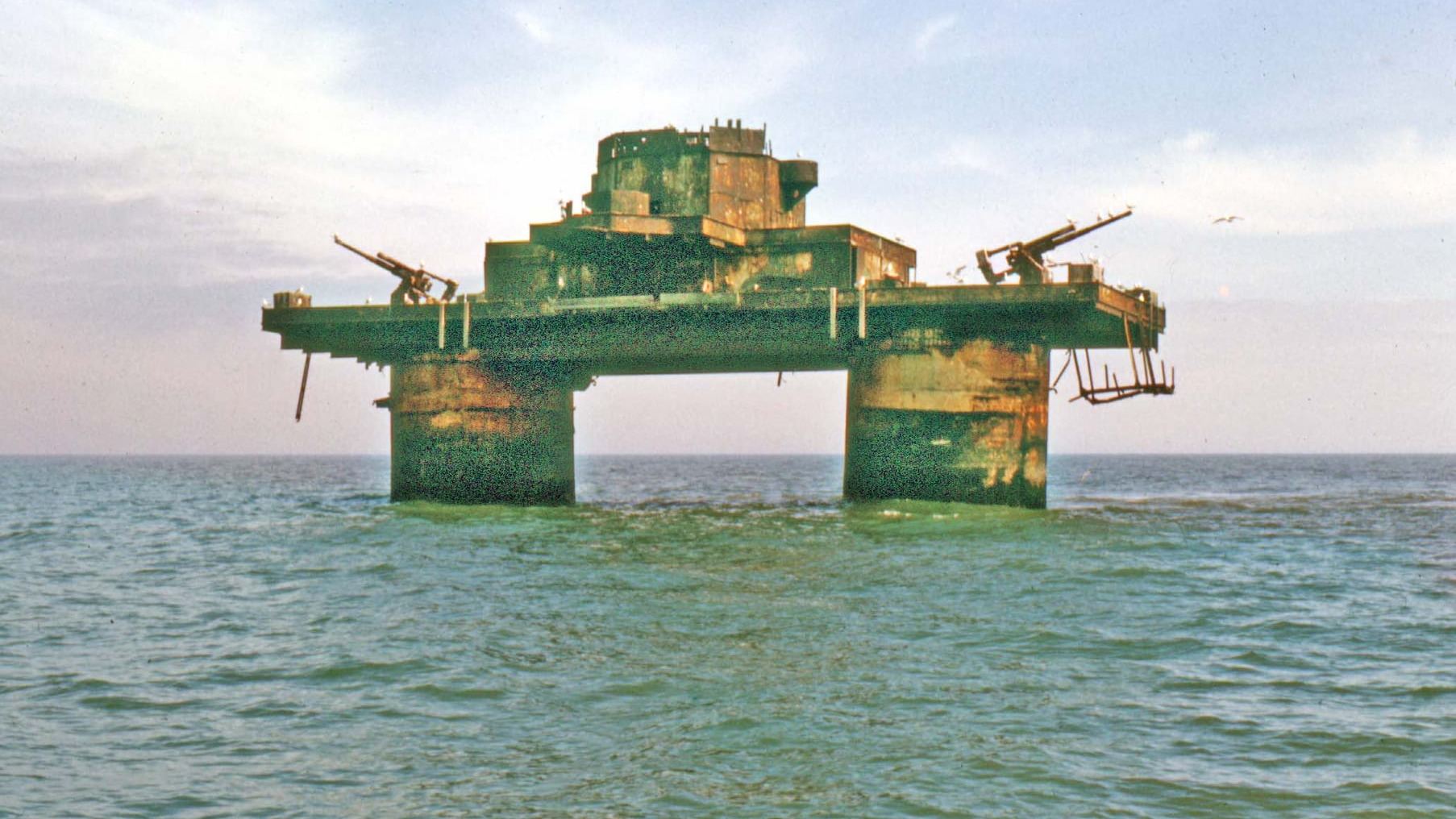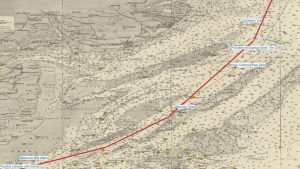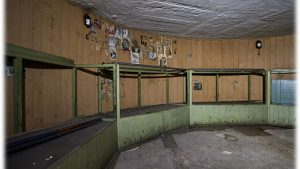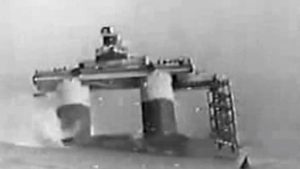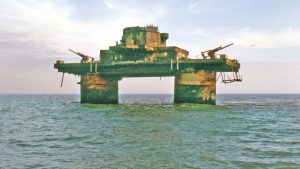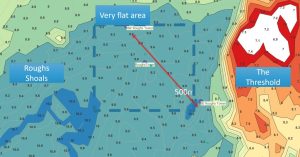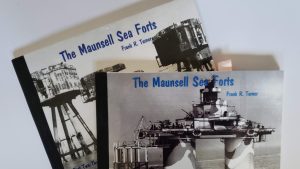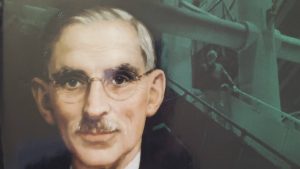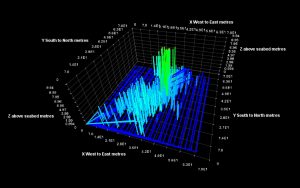U1 Roughs Tower
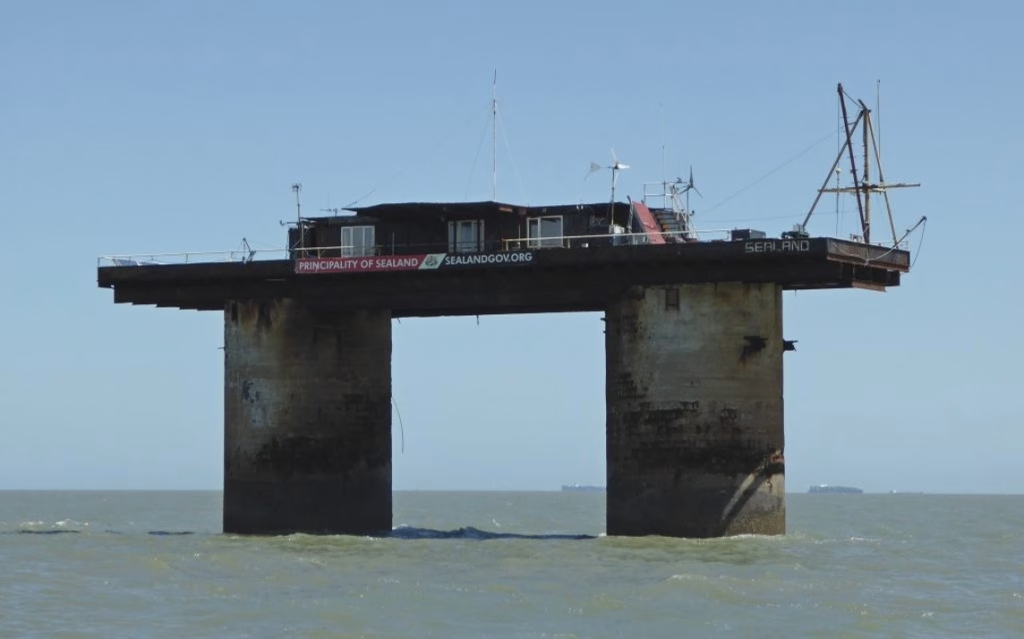
Roughs Tower celebrated its 80th anniversary in 2022. In action, Roughs engaged 96 enemy aircraft and expended 1,784 3.7″ rounds, 1,217 Bofors rounds: six aircraft and six V1 kills were claimed1.Foynes, J. P. (Julian P. ). The Battle of the East Coast (1939-1945). Isleworth, Middx. : J.P. Foynes, 1994..
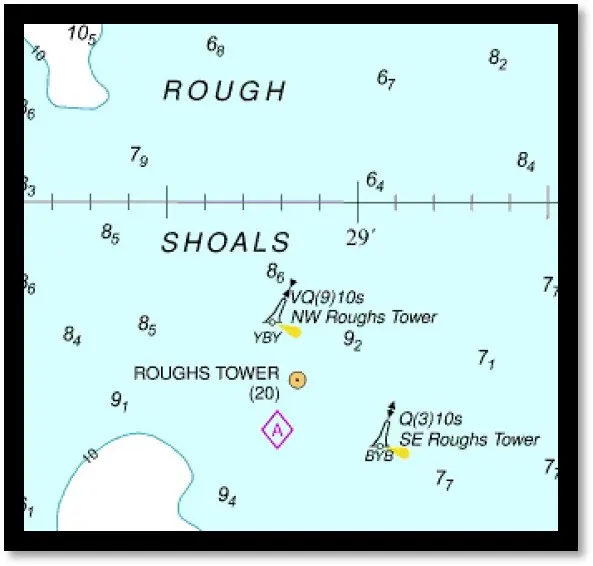
In late 1966 it was taken over by Roy Bates (self-appointed Prince of Sealand), the tower’s career as Sealand is well documented elsewhere. Sadly, most of the superstructure was removed to make a helipad but the main structure still appears sound. The towers sit on a seabed of 9.2m below CD.
U2 Sunk Head
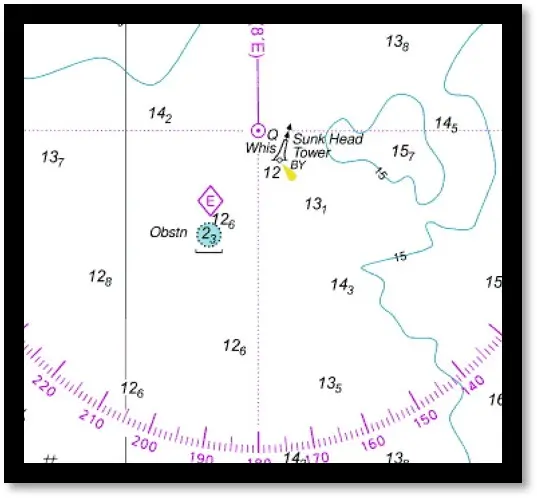
Sunk Head sits on a seabed at 12.6m below CD and so was the deepest installation of the four Naval Towers. This meant that there was only 19′ freeboard 2From the seabed to the bottom of the main deck was 74′. The depth of water 12.6m=42’CD. MHWS@Sunk Head=3.9m=13′. Freeboard at MHWS= 74-(42+13)=19′ from the deck to High Water Springs, this would be reduced by waves and and storms.
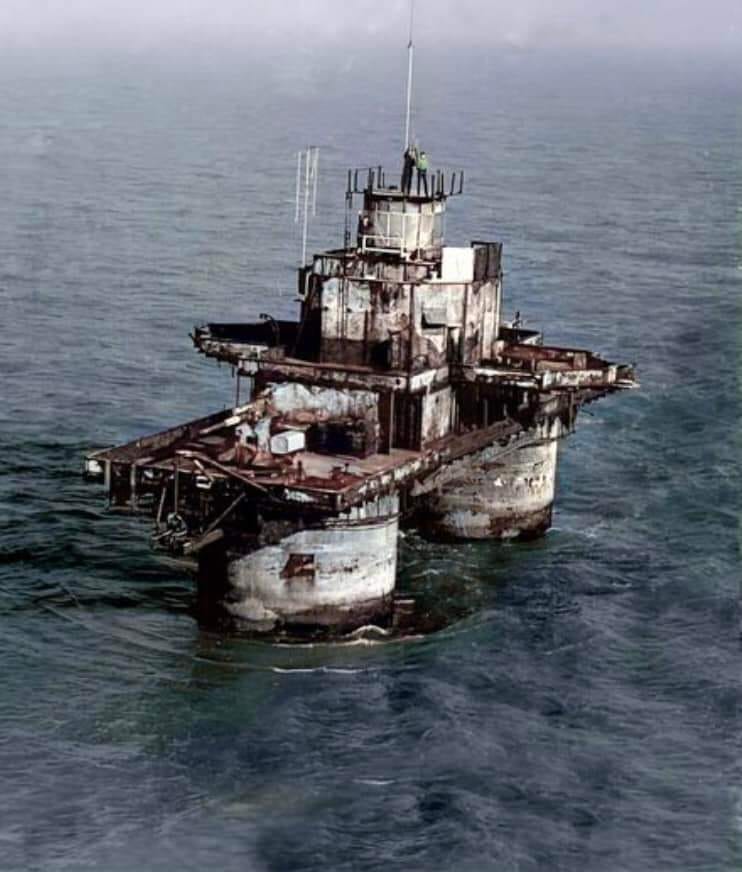
From Principality of SeaLand Official Community, original author unknown.
Radio pirates tried to occupy the tower but failed to maintain a presence. When they boarded, it was found that the towers had filled with water due to storm waves.
To prevent further incursions U2 Sunk Head was partially demolished in 1967 to deny it to future occupiers. To misquote the Italian Job, made two years later:
“You’re only supposed to blow the bloody doors off!”.
Probably the Navy was also having some fun. This short video shows the event.
The stumps of the towers were left standing above sea level. This resulted in a vessel being damaged by colliding with them in 1991. Presumably, the job was finished not long after this although this left an even greater hazard at only 2.3m below CD. To find out what remains a survey was made using a yacht depth sounder in 2023. This was developed into a rough 3D image to be produced showing the base and tower stumps.
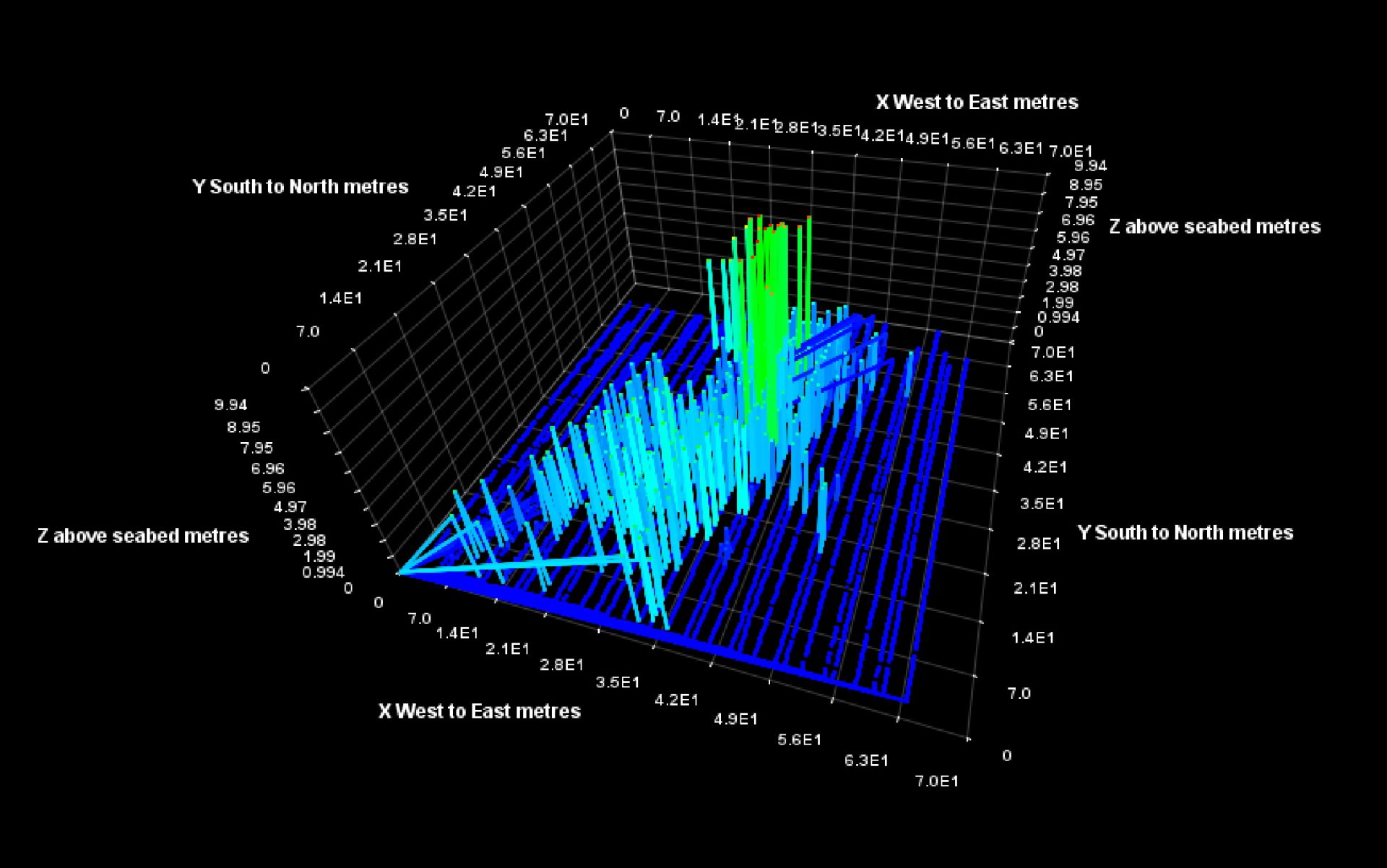
U3 Tongue Sand
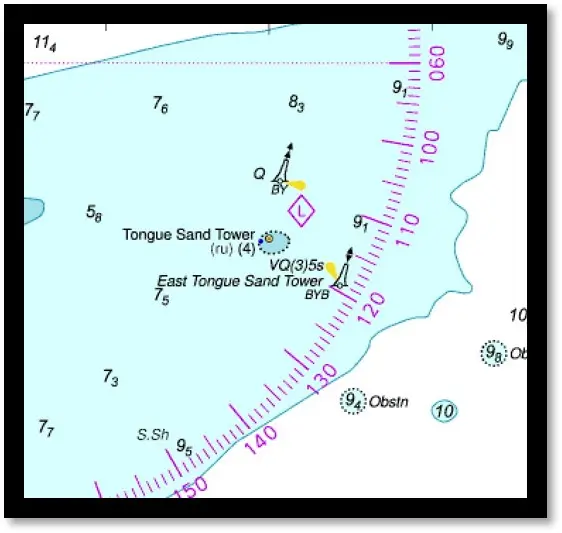
Tongue Sands sits on a seabed of around 7m below CD and visibly began to subside in 1947. In action Tongue Fort, perhaps optimistically, claimed an ‘E’ Boat kill from an attack by fifteen E-boats in 19453There are no E-boat wrecks in the area listed in the Admiralty database. The most likely encounter was on 22/23rd January 1945: See Seekrieg 1945, Januar “Latecomer Halo (2365 BRT), then the flotilla is fought by the frigates Seymour, Stayner and 4 MTB. S 168 is damaged by a 7.6 cm hit. 4 boats of the 6th S-Flotilla (Kptlt. Matzen) and 3 boats of the 4th S-Flotilla (Kpt. Fimmen) avoid the battle of the 9th S-Flotilla and remain without contact with the enemy. The 8th S-Flotilla (KKpt. Zymalkowski) with S 194, S 196, S 197, S 199 and S 701 reaches the Thames northeast of North Foreland and fights with the British escort vehicles, the Seymour, the corvette Guillemot and 3 MTB groups. On the British side, MTB 495 is severely damaged. S 199 is severely damaged by collision with S 701 and has to be sunk at Fort Tongue Sand. Shortly before the arrival of the flotilla, S 701 is shot at as a straggler by its own outpost boats. It remained operational until the end of the war.”
German: 22./23.1.1945
Nordsee- In der Nacht vom 22./23.1. stellen sich die S-Flottillen 4, 6, 8 und 9 mit insgesamt 16 Booten gegen drei zu erwartende Konvois in der Scheldemündung auf. Doch die deutschen Vorbereitungen sind den Engländern durch Funkaufklärung bekannt geworden; das »Nore Command« setzt von vorn herein starke Küstenschutzverbände ein: Die 9. S-Flottille (KKpt. von Mirbach) mit S 206, S 168, S 130 und S 175 greift einen Konvoi nördlich von Dünkirchen an. S 168 und S 175 versenken den brit. Nachzügler Halo (2365 BRT), anschließend wird die Flottille durch die Fregatten Seymour, Stayner und 4 MTB bekämpft. S 168 wird durch einen 7,6 cm-Treffer beschädigt. 4 Boote der 6. S-Flottille (Kptlt. Matzen) und 3 Boote der 4. S-Flottille (KKpt. Fimmen) weichen dem Gefecht der 9. S-Flottille aus und bleiben ohne Feindberührung. Die 8. S-Flottille (KKpt. Zymalkowski) mit S 194, S 196, S 197, S 199 und S 701 erreicht die Themse nordöstlich von North Foreland und führt Gefechte mit den brit. Geleitfahrzeugen, der Seymour, der Korvette Guillemot und 3 MTB-Gruppen. Auf britischer Seite wird MTB 495 schwer beschädigt. S 199 wird durch Kollision mit S 701 schwer beschädigt und muss bei Fort Tongue Sand selbstversenkt werden. Kurz vor dem Einlaufen der Flottille wird S 701 als Nachzügler noch von eigenen Vorpostenbooten beschossen. Es bleibt bis zum Kriegsende nicht einsatzfähig.. After the War, the crew had to be rescued by the RNLI and the fort was abandoned in 1949. Only a stump remains. Judging by the chart a visit at LW Springs would be interesting. Unlike the other sites where the tide reciprocates, there is a rotary cycle at Tongue Sand which caused scouring and collapse.
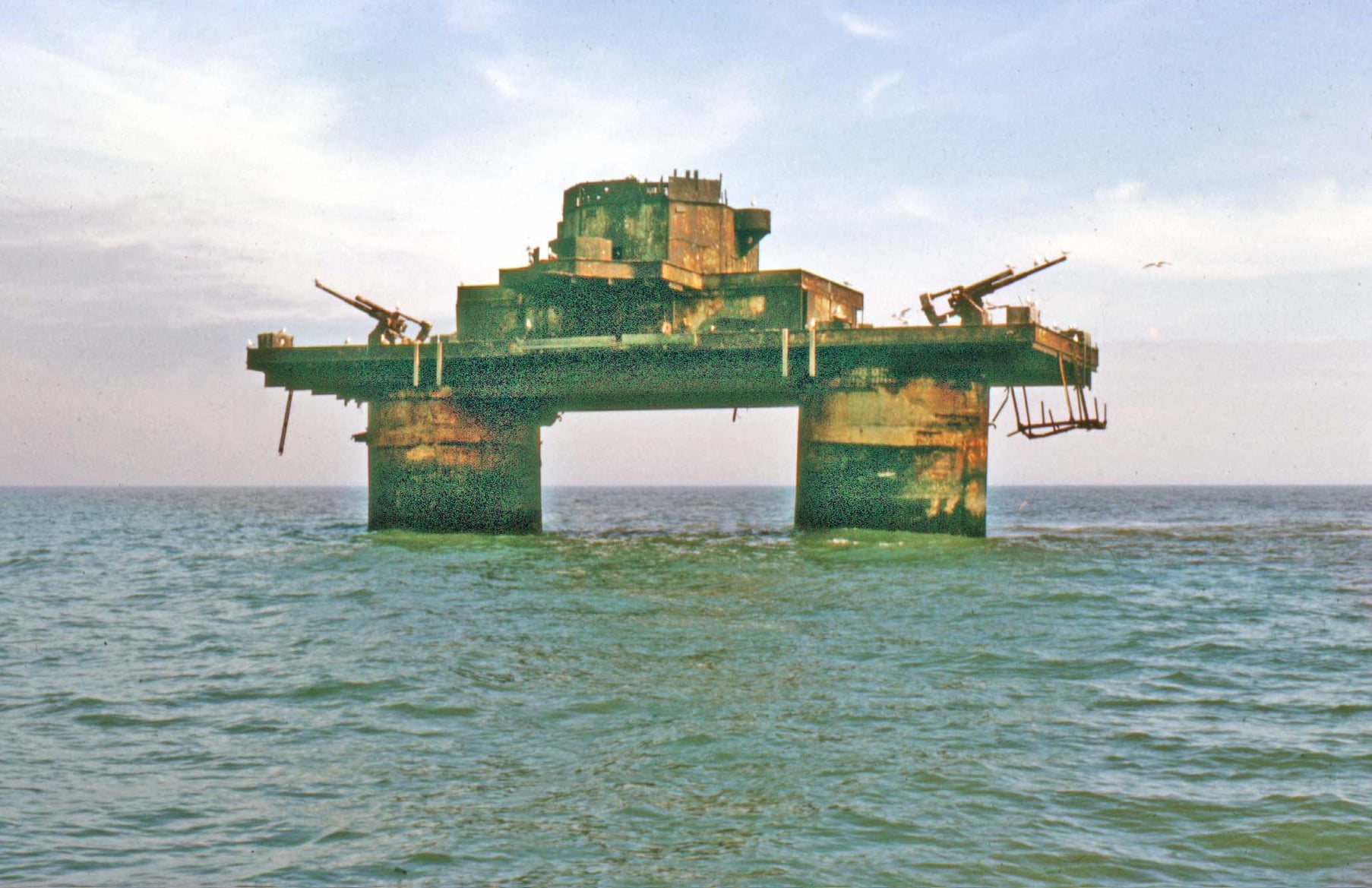
The Admiralty chose the sites, of which this was the third. Maunsell would have understood the issue so why allow it to be put there? If it had been deployed on Sunk Sand, it might not have collapsed and would have closed the gap mentioned earlier. These photographs from around 1973 show the instability of the towers.
U4 Knock John
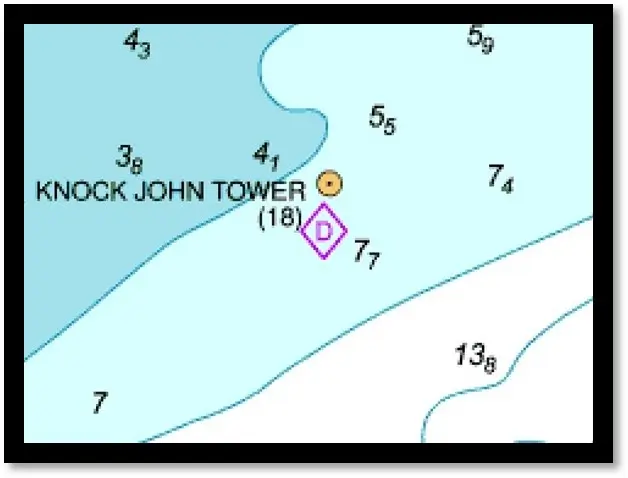
U4 Knock John sits on a seabed of around 6m and looks surprisingly good from the photos taken in 2018 by the 28DL group and used in the HM Fort Roughs Tower workings item. There are still traces of the Carbolastic bitumen.
The crew would have been thrilled on June 5th 1944: throughout that day and evening, thousands of bombers passed overhead to bomb France. During the morning the 280 vessels of Force ‘L’ assembled nearby before sailing for Normandy. This was the follow-up force that would push into France.
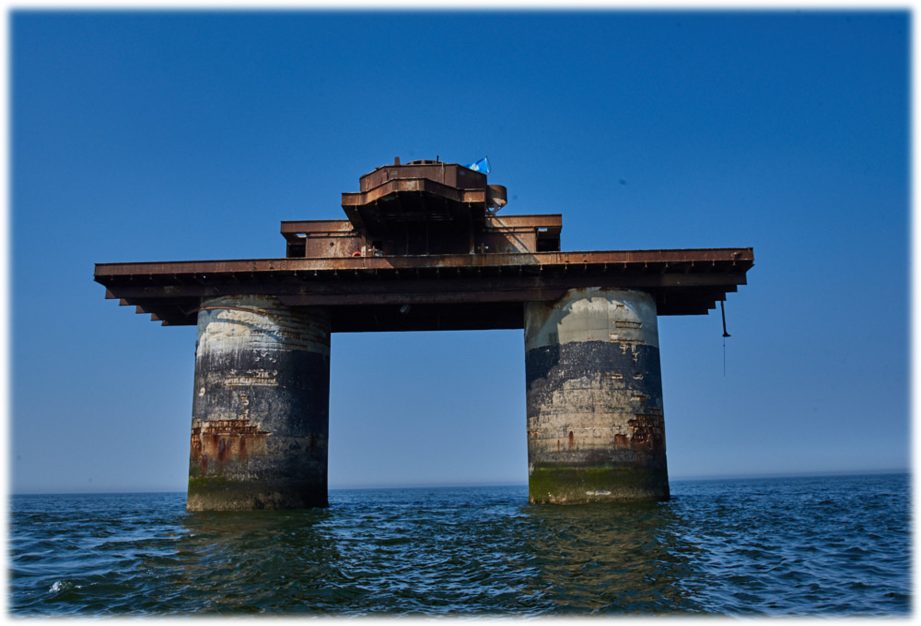
Tidal Diamonds
Sailors may notice the co-incidence of fort sites and tidal diamonds. This must be because the accurate surveys carried out for the site selection were then re-used.
The Army Towers
When more Towers were required, Maunsell proposed the design that was the basis for the Army Towers. Perhaps the Army had them because they were closer to the shore, or was it their turn? The Army forts are visually more appealing and another tale which is well covered by Frank Turner and others. The first set was positioned in the Mersey and there were plans for many more such as on the Humber.
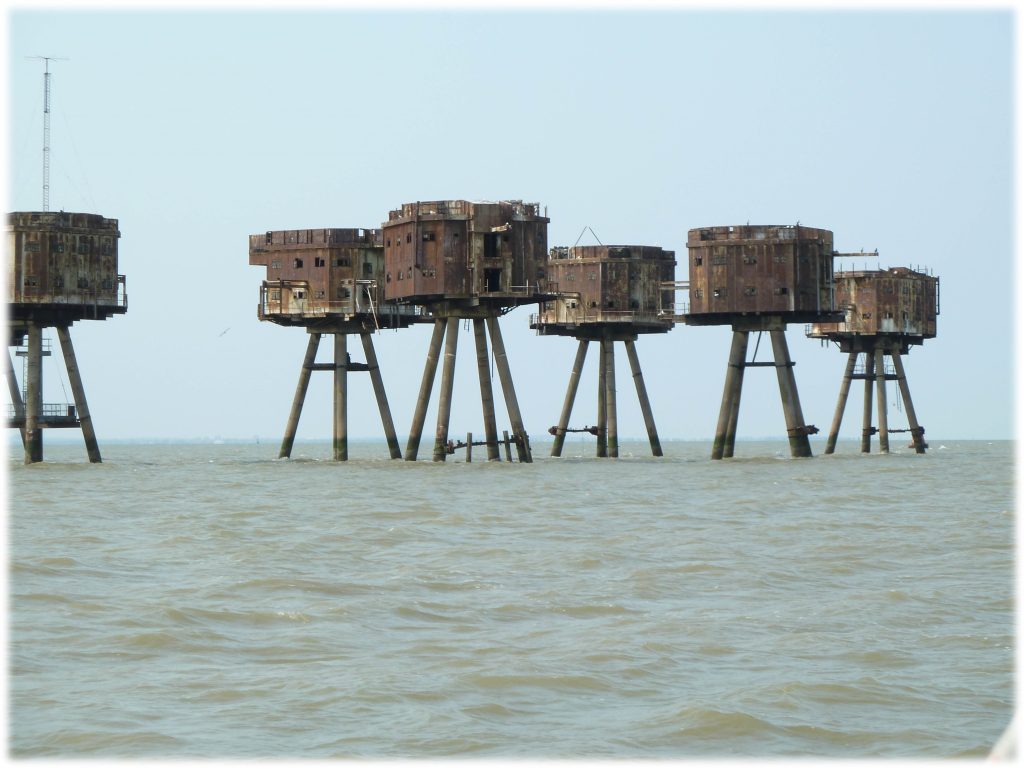
Locally, Redsands and Shivering are still largely intact although the Nore Towers were damaged by a collision in 1953 and then demolished. After completing the Army Towers, Maunsell developed a catamaran-style bombardment fort for the invasion of Normandy. One was built but not used.
Next Section The Site of Roughs Tower
Footnotes
- 1.Foynes, J. P. (Julian P. ). The Battle of the East Coast (1939-1945). Isleworth, Middx. : J.P. Foynes, 1994.
- 2From the seabed to the bottom of the main deck was 74′. The depth of water 12.6m=42’CD. MHWS@Sunk Head=3.9m=13′. Freeboard at MHWS= 74-(42+13)=19′
- 3There are no E-boat wrecks in the area listed in the Admiralty database. The most likely encounter was on 22/23rd January 1945: See Seekrieg 1945, Januar “Latecomer Halo (2365 BRT), then the flotilla is fought by the frigates Seymour, Stayner and 4 MTB. S 168 is damaged by a 7.6 cm hit. 4 boats of the 6th S-Flotilla (Kptlt. Matzen) and 3 boats of the 4th S-Flotilla (Kpt. Fimmen) avoid the battle of the 9th S-Flotilla and remain without contact with the enemy. The 8th S-Flotilla (KKpt. Zymalkowski) with S 194, S 196, S 197, S 199 and S 701 reaches the Thames northeast of North Foreland and fights with the British escort vehicles, the Seymour, the corvette Guillemot and 3 MTB groups. On the British side, MTB 495 is severely damaged. S 199 is severely damaged by collision with S 701 and has to be sunk at Fort Tongue Sand. Shortly before the arrival of the flotilla, S 701 is shot at as a straggler by its own outpost boats. It remained operational until the end of the war.”
German: 22./23.1.1945
Nordsee- In der Nacht vom 22./23.1. stellen sich die S-Flottillen 4, 6, 8 und 9 mit insgesamt 16 Booten gegen drei zu erwartende Konvois in der Scheldemündung auf. Doch die deutschen Vorbereitungen sind den Engländern durch Funkaufklärung bekannt geworden; das »Nore Command« setzt von vorn herein starke Küstenschutzverbände ein: Die 9. S-Flottille (KKpt. von Mirbach) mit S 206, S 168, S 130 und S 175 greift einen Konvoi nördlich von Dünkirchen an. S 168 und S 175 versenken den brit. Nachzügler Halo (2365 BRT), anschließend wird die Flottille durch die Fregatten Seymour, Stayner und 4 MTB bekämpft. S 168 wird durch einen 7,6 cm-Treffer beschädigt. 4 Boote der 6. S-Flottille (Kptlt. Matzen) und 3 Boote der 4. S-Flottille (KKpt. Fimmen) weichen dem Gefecht der 9. S-Flottille aus und bleiben ohne Feindberührung. Die 8. S-Flottille (KKpt. Zymalkowski) mit S 194, S 196, S 197, S 199 und S 701 erreicht die Themse nordöstlich von North Foreland und führt Gefechte mit den brit. Geleitfahrzeugen, der Seymour, der Korvette Guillemot und 3 MTB-Gruppen. Auf britischer Seite wird MTB 495 schwer beschädigt. S 199 wird durch Kollision mit S 701 schwer beschädigt und muss bei Fort Tongue Sand selbstversenkt werden. Kurz vor dem Einlaufen der Flottille wird S 701 als Nachzügler noch von eigenen Vorpostenbooten beschossen. Es bleibt bis zum Kriegsende nicht einsatzfähig.
Image Sources and Credits
Image Credits and Sources
- U4-Knock-John: www.28dayslater.co.uk
- 1.Foynes, J. P. (Julian P. ). The Battle of the East Coast (1939-1945). Isleworth, Middx. : J.P. Foynes, 1994.
- 2From the seabed to the bottom of the main deck was 74′. The depth of water 12.6m=42’CD. MHWS@Sunk Head=3.9m=13′. Freeboard at MHWS= 74-(42+13)=19′
- 3There are no E-boat wrecks in the area listed in the Admiralty database. The most likely encounter was on 22/23rd January 1945: See Seekrieg 1945, Januar “Latecomer Halo (2365 BRT), then the flotilla is fought by the frigates Seymour, Stayner and 4 MTB. S 168 is damaged by a 7.6 cm hit. 4 boats of the 6th S-Flotilla (Kptlt. Matzen) and 3 boats of the 4th S-Flotilla (Kpt. Fimmen) avoid the battle of the 9th S-Flotilla and remain without contact with the enemy. The 8th S-Flotilla (KKpt. Zymalkowski) with S 194, S 196, S 197, S 199 and S 701 reaches the Thames northeast of North Foreland and fights with the British escort vehicles, the Seymour, the corvette Guillemot and 3 MTB groups. On the British side, MTB 495 is severely damaged. S 199 is severely damaged by collision with S 701 and has to be sunk at Fort Tongue Sand. Shortly before the arrival of the flotilla, S 701 is shot at as a straggler by its own outpost boats. It remained operational until the end of the war.”
German: 22./23.1.1945
Nordsee- In der Nacht vom 22./23.1. stellen sich die S-Flottillen 4, 6, 8 und 9 mit insgesamt 16 Booten gegen drei zu erwartende Konvois in der Scheldemündung auf. Doch die deutschen Vorbereitungen sind den Engländern durch Funkaufklärung bekannt geworden; das »Nore Command« setzt von vorn herein starke Küstenschutzverbände ein: Die 9. S-Flottille (KKpt. von Mirbach) mit S 206, S 168, S 130 und S 175 greift einen Konvoi nördlich von Dünkirchen an. S 168 und S 175 versenken den brit. Nachzügler Halo (2365 BRT), anschließend wird die Flottille durch die Fregatten Seymour, Stayner und 4 MTB bekämpft. S 168 wird durch einen 7,6 cm-Treffer beschädigt. 4 Boote der 6. S-Flottille (Kptlt. Matzen) und 3 Boote der 4. S-Flottille (KKpt. Fimmen) weichen dem Gefecht der 9. S-Flottille aus und bleiben ohne Feindberührung. Die 8. S-Flottille (KKpt. Zymalkowski) mit S 194, S 196, S 197, S 199 und S 701 erreicht die Themse nordöstlich von North Foreland und führt Gefechte mit den brit. Geleitfahrzeugen, der Seymour, der Korvette Guillemot und 3 MTB-Gruppen. Auf britischer Seite wird MTB 495 schwer beschädigt. S 199 wird durch Kollision mit S 701 schwer beschädigt und muss bei Fort Tongue Sand selbstversenkt werden. Kurz vor dem Einlaufen der Flottille wird S 701 als Nachzügler noch von eigenen Vorpostenbooten beschossen. Es bleibt bis zum Kriegsende nicht einsatzfähig.
Image Credits and Sources
- U4-Knock-John: www.28dayslater.co.uk
